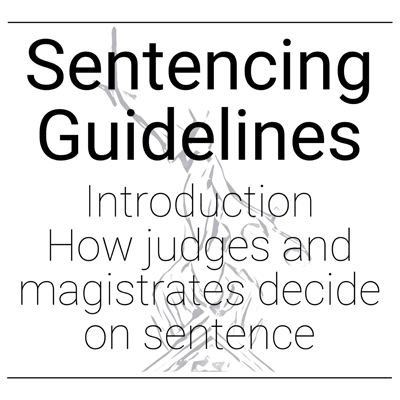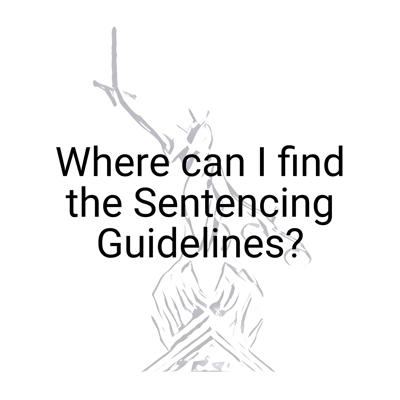How judges and magistrates decide on sentence
All Contents > Sentencing Guidelines Intro > Step 1 Culpability & Harm > Step 2 Starting Point and Sentencing Range > Steps 3 onwards to Final Sentence
“Judges and magistrates use the sentencing guidelines to arrive at a provisional sentence based on the defendant’s culpability and the harm caused; to adjust the provisional sentence up or down to take account of aggravating or mitigating circumstances; to make any final adjustments, such as a reduction for a guilty plea.”
On this page …
Introduction to the Sentencing Guidelines
Where can I find the Sentencing Guidelines?
What are Overarching Guidelines?
What is the Equal Treatment Bench Book?
Is there a sentencing guideline for every offence?
Guidelines for sentencing in murder cases
Youth sentencing
How do the Sentencing Guidelines work?
Judges and magistrates use the sentencing guidelines:
To arrive at a sentence starting point and a sentencing range (minimum to maximum) based on the defendant’s culpability and the harm caused;
To adjust the starting point up or down within the sentencing range to take account of aggravating or mitigating circumstances;
To make any further adjustments, such as a reduction for a guilty plea, to arrive at a final sentence.
This page explains the step-by-step process of how sentencing guidelines work and uses an example in an ABH (Assault Occasioning Actual Bodily Harm) case to reveal how a final sentence is reached.
Why use sentencing guidelines?
Sentencing guidelines are used to assist judges and magistrates in calculating the correct sentence in a variety of circumstances and are intended to ensure sentencing consistency across courts.
Sentencing Guidelines are also used by magistrates/Distict Judges to decide on allocation, i.e. whether a case should be heard for trial or sentence in the magistrates’ court or in the Crown Court.
Courts must follow sentencing guidelines unless they conclude that it would be contrary to the interests of justice to do so (s.59(1) Sentencing Act 2020).
-
Allocation relates to either-way offences (i.e. offences which can be heard in either the magistrates’ court or Crown Court).
In general, cases move to the Crown Court when the magistrates consider that their sentencing powers are insufficient, or the case is otherwise one of particular complexity. The maximum term of imprisonment that can be imposed for a single either-way offence in the magistrates’ court is 6 months (going up to 12 months in early 2022).
You can read more about the sentencing powers of the magistrates’ court and Crown Court in Maximum Sentences and about how cases move from the magistrates’ court to the Crown Court in Which Court will I go to?
Where can I find the Sentencing Guidelines?
LINKS BELOW TO MORE …
More about Trials, Appeals and Sentencing …
Youth Sentencing
This Sentencing Guidelines section is about the sentencing of adults (i.e. 18s and over).
In the vast majority of cases under 18s will have their their trial and sentence at the Youth Court. The purposes of sentencing for youths differ to those for adults, with the focus being on preventing offending and welfare.
The Youth Court trial and sentencing process is very similar to the process at the adult magistrates’ court, although there are significant restrictions on who can go into court (the general public are not allowed to enter) and there are restrictions on reporting by the press in cases involving under 18s. The Youth Court is also less formal than the adult magistrates’ court and far less formal than the Crown Court.
More information about the criminal courts and sentencing for under 18s …
Subscribe to continue …















